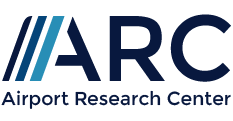
Hong Kong International Airport
Terminal Collaborative Decision Making
Pax Flow Solution for Hong Kong International Airport – Real-Time Passenger Flow Forecasting with CAST
With the Pax Flow Solution powered by CAST, airport stakeholders get a common view on the planned capacity situation and expected demand at all terminal processors. Connected to the airport live database, the most accurate prediction of the capacity situation enables optimized staffing and better service quality.
Project Overview
Hong Kong International Airport (HKIA) requested a solution to predict the capacity situation on the day of operation and to be able to carry out strategic and tactical planning of the airport processes. Furthermore, the system should allow all stakeholders a common view on the planned capacity situation and expected demand at all terminal processes.
ARC is proud to be awarded the design and implementation of this terminal collaborative decision making (TCDM).
Services provided
The core of the system is a model based on the PAX FLOW SOLUTION powered by CAST. It represents all passenger flows and related processes in fast time simulation engine. With this the system can calculate and forecast the expected loads and capacity situations at all interconnected processes in the terminal. The system is connected to the live airport systems including the resource management systems and latest flight schedule data. By processing with the latest data available the most accurate prediction of the capacity situation gets available. The system also provides the users with recommendation on the optimized staffing levels at selected processes based on their KPIs. Next to the current situation the PAX FLOW SOLUTION also enables the user with “what-if” capabilities to plan the operations at the terminal.
Results and Benefit
After the technical implementation phase it is planned to provide the different stakeholders of Hong Kong International Airport with the most precise view on the next hours of operations (up to +48h). This will enable the different stakeholders to operate more efficiently in terms of staff planning and passenger flow management. In particular the reactive approach of staff planning can be substituted by a proactive one, resulting in a much more efficient use of staff and improved passenger convenience.







